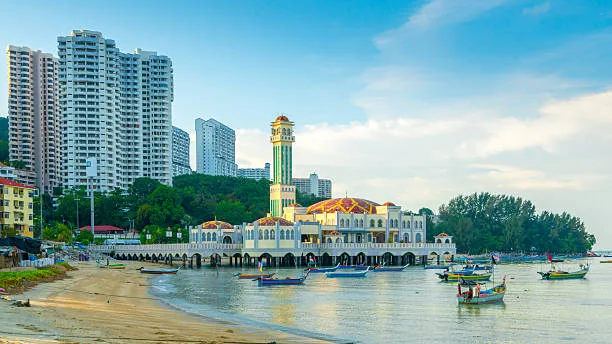Malaysia
Malaysia: A Rich Tapestry of Geography, Culture, and History
Introduction
Malaysia stands as a prominent destination in Southeast Asia, celebrated for its unique blend of natural beauty, historical depth, and cultural diversity. This article delves into Malaysia’s geographical, touristic, historical, cultural, social, and economic aspects, while highlighting the key tourist attractions that make it a must-visit destination.
1. Geographical Information
Malaysia is located in Southeast Asia, divided into two main regions: Peninsular Malaysia (West Malaysia) and East Malaysia on the island of Borneo. It borders Thailand to the north, Singapore to the south, Indonesia to the south and west, and the Philippines to the northeast. The country features a tropical rainforest climate with two distinct seasons: the rainy season from May to September and the dry season from October to March.
2. Tourism in Malaysia
Malaysia offers a diverse range of attractions due to its natural and cultural variety. Here are some notable tourist destinations:
- Kuala Lumpur: The capital city is known for its iconic landmarks like the Petronas Towers and bustling shopping areas such as Bukit Bintang.
- Langkawi: Famous for its white sandy beaches and clear blue waters, Langkawi offers a variety of water activities.
- Cameron Highlands: An elevated area known for its tea plantations and stunning natural landscapes.
- George Town in Penang: A historic city with colonial architecture, street art, and unique culinary experiences.
Malaysia’s history is rich and varied, spanning from ancient times to the modern era. The country experienced periods of Portuguese, Dutch, and British colonial rule before gaining independence in 1957. These colonial influences are reflected in its architecture and cultural practices. Modern Malaysia has undergone rapid economic development since independence, transforming it into a significant regional player.
4. Culture and Traditions
Malaysia’s cultural landscape is incredibly diverse, with Malays, Chinese, Indians, and other ethnic groups coexisting. This diversity is reflected in its cultural practices and traditions:
- Festivals: Celebrations include Hari Raya Aidilfitri, Hari Raya Haji, and Deepavali.
- Traditional Dances: Such as the Malay "Zapin" dance and the Chinese "Lion Dance."
- Music: Includes traditional Malay music, Chinese opera, and Indian classical music.
5. Popular Cuisine
Malaysian cuisine is a fusion of various culinary traditions. Some popular dishes include:
- Nasi Lemak: A traditional dish of rice cooked in coconut milk, served with side dishes like sambal, fried crispy anchovies, and peanuts.
- Roti Canai: A type of flatbread served with curry.
- Mee Goreng: Fried noodles with vegetables, meat, or seafood.
6. Economy
Malaysia is one of the advanced economies in Southeast Asia. Its economy is significantly supported by the following sectors:
- Oil and Gas: Major sources of national revenue.
- Manufacturing: Includes electronics and pharmaceuticals.
- Tourism: A key contributor to the national economy, supported by investments in tourism infrastructure.
7. Major Tourist Attractions
- Kinabalu Park: Home to Malaysia’s highest peak, Mount Kinabalu, ideal for mountain climbing enthusiasts.
- Malacca City: Known for its colonial history, offering a mix of architectural and historical experiences.
- Kinabatangan Wildlife Sanctuary: Known for its rich biodiversity, including unique plant and animal species, and is a UNESCO World Heritage Site.
References and Sources
- "Malaysia Tourism Board." Malaysia Tourism
- "Lonely Planet: Malaysia & Singapore." Lonely Planet
- "Encyclopaedia Britannica: Malaysia." Britannica
Malaysia truly is a country worth exploring, offering a rich array of experiences from its natural wonders and cultural heritage to its vibrant cuisine. Whether you seek adventure, cultural immersion, or simply a relaxing getaway, Malaysia provides an unforgettable experience.








No comments